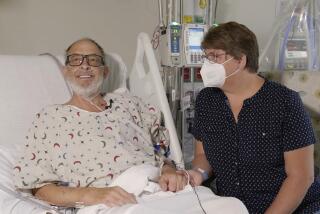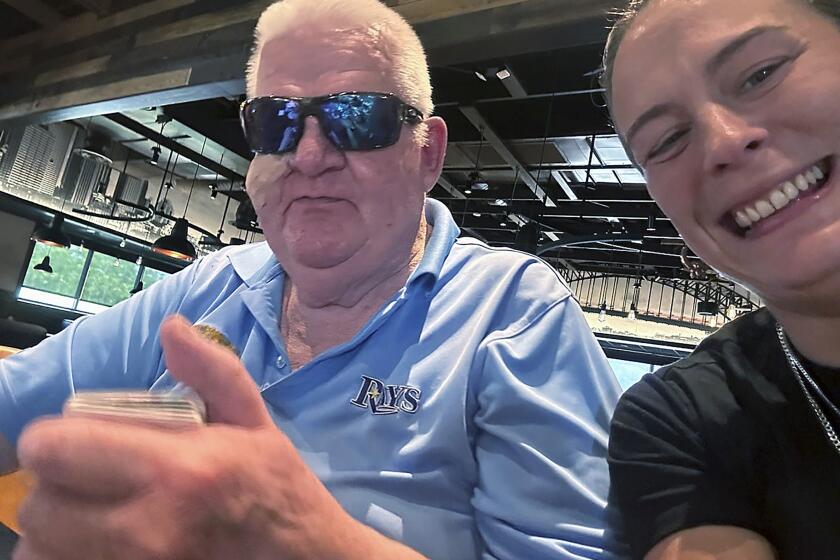One-Time Barnard Associate on the Team
Dr. Brian M. Kennelly was spending the morning at the Newport Cardio-Testing Center, monitoring patients as they took a cardiac treadmill test.
As one of the principals in Hoag Hospital’s new heart transplant team, the 42-year-old cardiologist will soon be helping care for Orange County’s first transplant recipients.
But between examinations Wednesday, the South African-born physician reminisced about the early days of heart transplants--when he worked in Cape Town, South Africa, with renowned transplant surgeon Christiaan Barnard.
From 1968 to 1978, Kennelly worked at Groote Schuur teaching hospital, tending some of world’s first heart transplant patients.
He said that although he greatly admired Barnard’s medical skills, the famous surgeon had a “Jekyll and Hyde personality.”
Barnard, a compassionate surgeon who was fiercely protective of his patients, was also “impossible” to work with, Kennelly recalled. “He was a prima donna.” He could be “very likable . . . friendly one day and the next day ranting and raving and shouting.”
Critic of Apartheid
The South African government also found Barnard difficult to work with, he said. “The government was very proud of him,” Kennelly said. “Here was this guy doing very advanced cardiac surgery in a country not considered medically significant.” But their prize surgeon was also an outspoken critic of apartheid.
Barnard insisted that his wards be desegregated--that black patients be housed with white Afrikaners Kennelly said. The surgeon insisted that he didn’t have enough nurses to run one ward for blacks and another for whites. And, Kennelly said, Barnard defiantly told the government: “If you don’t like it, I will shut down the (heart transplant) program.”
Kennelly, an expert on cardiac arrhythmia, used to outfit Barnard’s transplant patients with pacemakers and regulate their heartbeats. In one unusual phase of the transplant program, Barnard performed “piggyback” transplants--implanting a donor heart next to a patient’s damaged heart instead of removing the old heart. Kennelly, assisting him, invented a system of two pacemakers that made both hearts beat in unison.
Although other transplant centers weren’t interested in piggyback transplants, there were benefits to implanting a second heart, Kennelly said. For one thing, “it was a big psychological advantage” for transplant patients: Instead of feeling a sense of loss when a damaged heart was removed, a patient knew that the old heart was “on standby, so to speak.”
Back to His Own Heart
And in one case, Kennelly said, a patient with heart disease received a second heart, then recovered from the infection 10 months later. The donor heart was removed, and the patient resumed life with his original heart.
With Barnard, Kennelly said, there was the excitement of working with patients who were invalids before surgery but afterward might resume a normal life. Though at least 40% of their patients died within a year after surgery, it was always “very euphoric” to watch a donor heart pump blood and life into someone who hours before surgery was dying.
Since he left South Africa in 1978, Kennelly has not had an opportunity to work with heart transplants. But he was eager to begin again. “It’s going to be a lot of hard work,” he said. “But the patients are very appreciative.”
More to Read
Sign up for Essential California
The most important California stories and recommendations in your inbox every morning.
You may occasionally receive promotional content from the Los Angeles Times.










